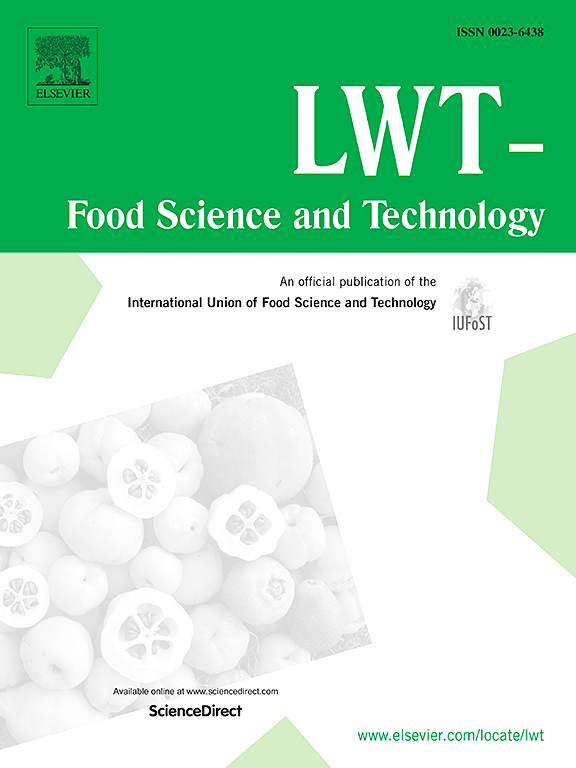通过元基因组分析阐明赤霞珠葡萄酒中微生物群落与风味代谢物形成之间的关系
IF 6
1区 农林科学
Q1 FOOD SCIENCE & TECHNOLOGY
引用次数: 0
摘要
葡萄酒的独特风味和质量在很大程度上取决于其复杂的发酵过程,而发酵过程又受到发酵过程中微生物活动的极大影响。在这项研究中,我们调查了赤霞珠葡萄酒自发发酵过程中微生物群与主要代谢物形成之间的关系。通过顶空固相微萃取-气相色谱-质谱联用和高效液相色谱法鉴定了赤霞珠葡萄酒自发发酵过程中的主要代谢物,并利用元基因组测序分析了整个发酵过程中微生物群落的演替和潜在代谢能力。结果表明,随着酒精发酵的进行,酵母菌的相对丰度显著增加,在酒精发酵中占主导地位,与此同时,微生物群落的结构也发生了显著变化。酵母属、汉森孢属、Tatumella 属和 Oenococcus 属与葡萄酒中主要代谢产物(如醇、酸和酯)的生物合成有潜在的相关性。特别是酵母菌,作为酒精发酵的主要驱动力,与这些代谢物的生物合成密切相关。总之,我们的研究推动了对微生物群落在发酵过程中形成风味特征的功能作用和代谢贡献的理解。本文章由计算机程序翻译,如有差异,请以英文原文为准。

Elucidating the relationship between microbial communities and the formation of flavour metabolites in Cabernet Sauvignon wine through metagenomic analysis
The unique flavour and quality of wine largely depend on its complex fermentation process, which in turn is significantly influenced by the microbial activities during fermentation. In this study, we investigated the relationship between the microbiota and the formation of main metabolites during the spontaneous fermentation of Cabernet Sauvignon wine. The main metabolites during the spontaneous fermentation of Cabernet Sauvignon wine were identified through headspace solid-phase microextraction coupled to gas chromatography-mass spectrometry and high-performance liquid chromatography, and metagenomic sequencing was used to characterize the succession and potential metabolic capabilities of the microbial communities throughout the fermentation process. The results showed that as the alcoholic fermentation progressed, there was a significant increase in the relative abundance of Saccharomyces, dominating the alcoholic fermentation, and concurrently, there were notable changes in the structure of the microbial community. The genera Saccharomyces, Hanseniaspora, Tatumella, and Oenococcus showed potential correlations with the biosynthesis of the main metabolites such as alcohols, acids, and esters, in wine. Particularly, Saccharomyces, as the primary driver of alcoholic fermentation, was closely related to the biosynthesis of these metabolites. Overall, our study advances the comprehension of the functional role and metabolic contributions of microbial communities in shaping the flavour profile during fermentation.
求助全文
通过发布文献求助,成功后即可免费获取论文全文。
去求助
来源期刊

LWT - Food Science and Technology
工程技术-食品科技
CiteScore
11.80
自引率
6.70%
发文量
1724
审稿时长
65 days
期刊介绍:
LWT - Food Science and Technology is an international journal that publishes innovative papers in the fields of food chemistry, biochemistry, microbiology, technology and nutrition. The work described should be innovative either in the approach or in the methods used. The significance of the results either for the science community or for the food industry must also be specified. Contributions written in English are welcomed in the form of review articles, short reviews, research papers, and research notes. Papers featuring animal trials and cell cultures are outside the scope of the journal and will not be considered for publication.
 求助内容:
求助内容: 应助结果提醒方式:
应助结果提醒方式:


